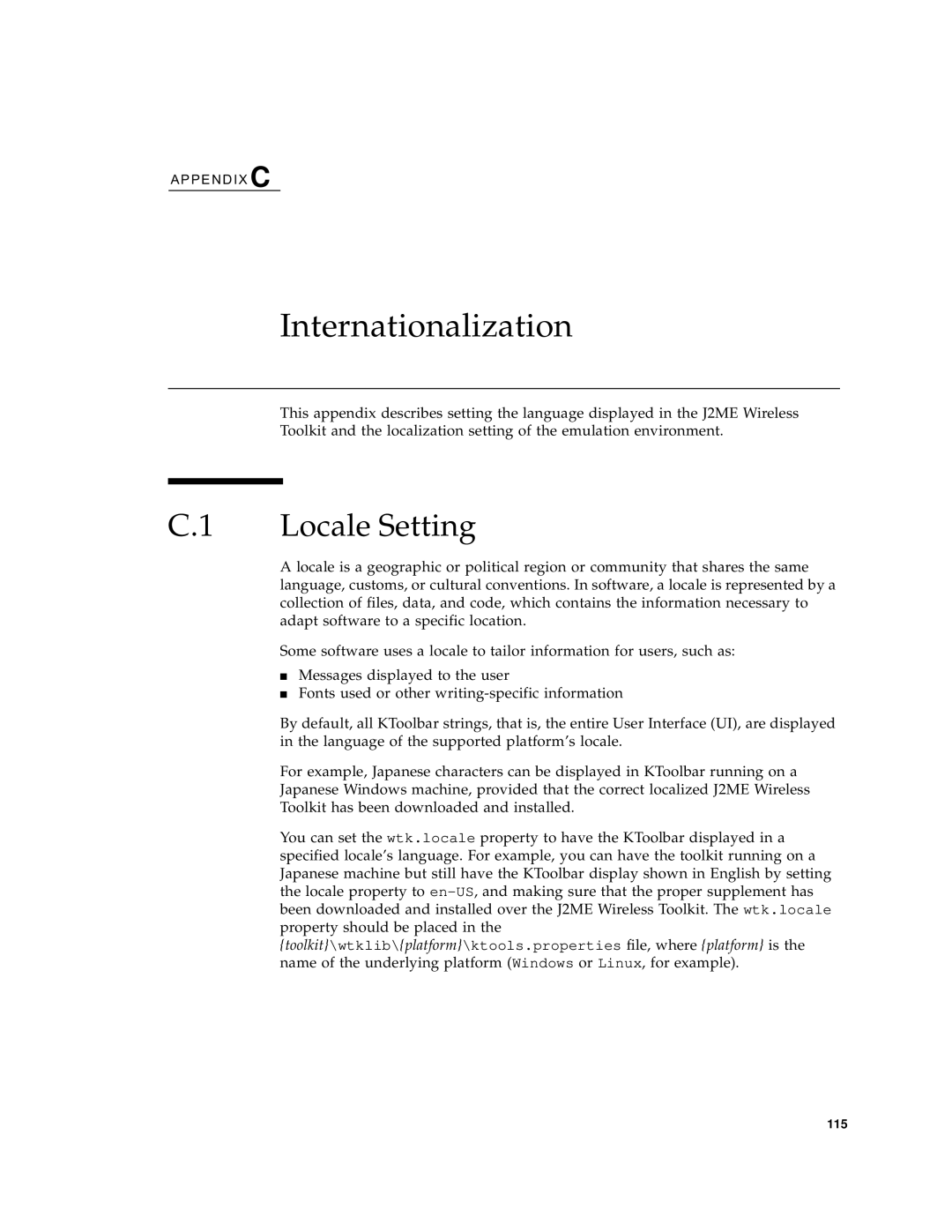
APPENDIX C
Internationalization
This appendix describes setting the language displayed in the J2ME Wireless Toolkit and the localization setting of the emulation environment.
C.1 Locale Setting
A locale is a geographic or political region or community that shares the same language, customs, or cultural conventions. In software, a locale is represented by a collection of files, data, and code, which contains the information necessary to adapt software to a specific location.
Some software uses a locale to tailor information for users, such as:
■Messages displayed to the user
■Fonts used or other
By default, all KToolbar strings, that is, the entire User Interface (UI), are displayed in the language of the supported platform’s locale.
For example, Japanese characters can be displayed in KToolbar running on a Japanese Windows machine, provided that the correct localized J2ME Wireless Toolkit has been downloaded and installed.
You can set the wtk.locale property to have the KToolbar displayed in a specified locale’s language. For example, you can have the toolkit running on a Japanese machine but still have the KToolbar display shown in English by setting the locale property to
115
